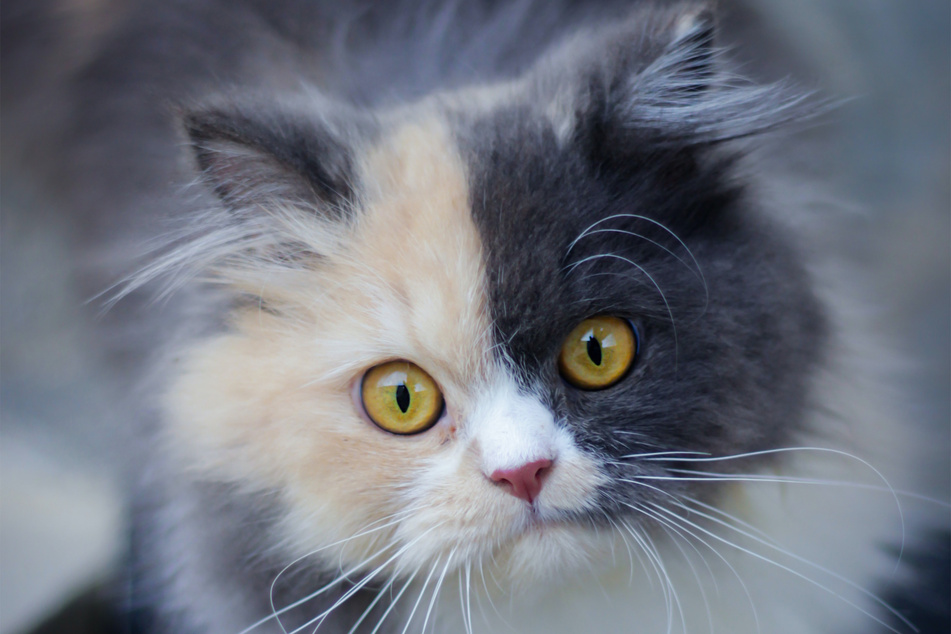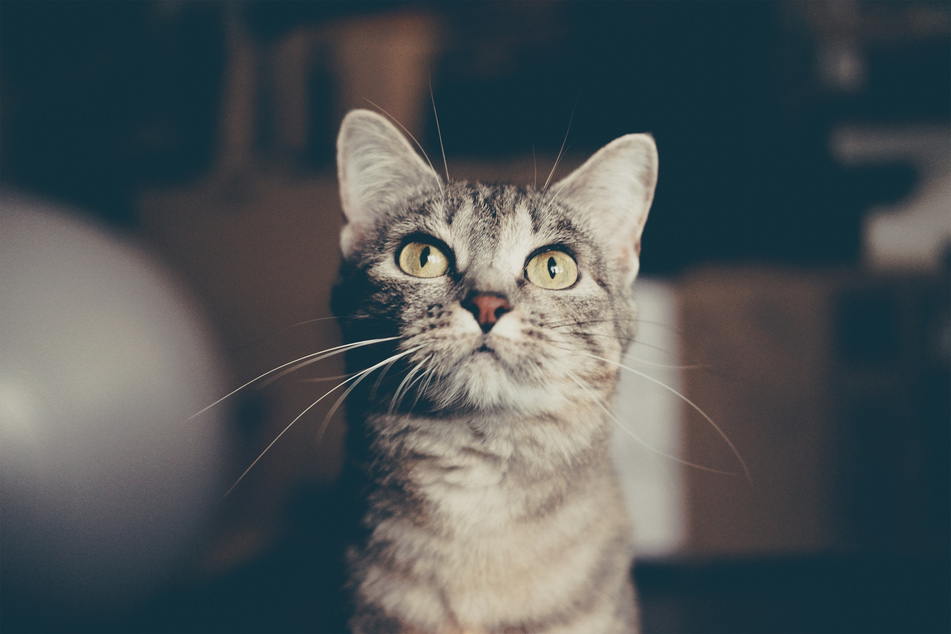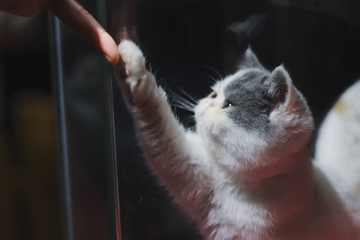Cat clicker training: What is it and how to clicker-train a cat
Does your four-pawed friend behave a little weirdly sometimes? Is it a naughty little bundle of joy? Try not to worry; there are always solutions. What is cat clicker training, and how can you do it to improve your cat's behavior?

Cats aren't particularly good at keeping their rambunctious activities limited to when it's convenient for their humans. They'll romp, run, leap, and live wild whenever they feel like it, and while it's cute, it can become a very real and very serious problem.
Is there a solution to this naughtiness? Is there any way to help control your cat's behavior and make it a little more obedient?
In this cat guide, TAG24 will take a look at cat clicker training. What is clicker training in cats, does it work as well as in dogs? Oh, and how do you clicker-train a cat? Is it difficult? We've got all the tips and tricks!
What is clicker training for cats?
Clicker training is a classical conditioning method that uses the acoustics of a clicker to instill positive rather than negative behavior. It uses the basic idea that when your cat hears the click, it should stop the bad behavior, perform the trick, or do what it has been trained to do.
This is achieved by creating associations between the clicker and whatever behavior you are trying to train. It is often combined with snacks, with cat owners giving a treat to their cat when it responds correctly to the clicker. Of course, it's important to make sure that whatever cat clicker training is being used for, no kitty is being harmed or punished as part of the process.
Ultimately, clicker training for cats is a way to condition particular behaviors in your cat by drawing an association between what you do or don't want your cat to do and your clicker's click.
Why should you clicker-train a cat?
If your cat has been behaving badly or is possibly just not the most docile of creatures, it's good to have a way to classically condition it into being more manageable. Of course, normal cat training is a great start, but using a specific method like clicker training can quickly hasten the process and produce a cat that's balanced, cute, and well-behaved.
Clicker training is great for correcting bad behavior, it's great to produce more obedient kitties, and it's great as a teaching method. Do you want your cat to perform tricks? Well, that's unlikely, but clicker training is certainly a good place to start!
Here are two great reasons why you should clicker-train your cat
1. Teach cats commands like "sit" and "down:" Cats won't learn words in the same way that a dog will, but you can get it to perform a few of the basic commands that can make life with a kitty easier. Indeed, you can teach a cat its name so you can associate a word with a behavior if you want to as well. Clicker training is a great way to achieve this.
Simply click the device and say a word like "sit" or "down" every time your kitty sits or lies down. Then begin to provide treats as well, giving them to your cat whenever it completes the behavior, you have clicked, and you have set the associated word. This forms a positive association between the click, the word, and the behavior.
2. Reward the right behavior of the cat: Every animal hates to be taken to the veterinarian - indeed, most humans hate going to the doctor - but it is a simple fact of life. As a result, every time you take your cat there, it will associate the journey and place with bad things. This will make it increasingly difficult to coerce your kitty into its box. Luckily, clicker training is a great solution.
It, of course, doesn't just have to be about getting your cat to the vet. If your cat associates the clicker with a reward for good behavior, then it will be more likely to do what you want it to do when you are using that same device. Conditioning your cat to be obedient when you click can, as a result, end up being extremely convenient.
You should try not to create an association between clicker training and negative things, though, as this can make it even more difficult to produce an obedient and happy kitty in the future.
Clicker training cat to stop bad behavior
An alternative way to use cat clicker training is to actively stop bad behavior. Some areas of your home, for example, will likely be off-limits for your cat - whether that be the breakfast table, sofa, or stovetop - and clicker training can help to keep your kitty away from those particular spots.
Simply lure your cat away from the places that you want it to stay away from and associate all these other spaces with positivity, rewards, and clicks. As a result, it will prefer to stay in the safe zones than risk upsetting its humans.

How to prepare your cat for clicker training
You can't just dive right into clicker training. It's a complicated and long process that will likely take many months to complete and will be ongoing for a lot of your cat's life. As a result, you should be prepared before you begin and develop an understanding of what you're getting yourself into.
Here's how to prepare your cat for clicker training
1. Get the right clicker:
- Clicker training doesn't have to be done with a clicker. Find a noise that your cat will easily recognize - maybe a whistle, a bell, or a rattle. Of course, you can buy specially-made cat clickers if you want to.
- Your clicker should be small, handy, and easy to use so that you can always carry it with you when around your cat.
- Choose a clicker that makes a loud, clear click so that your cat can easily hear it.
2. Provide the best reward:
- Only provide treats that your cat likes (this is rather obvious, of course).
- Make sure that the treat you use is only provided during clicker training. This makes the reward even more special for the cat and improves the association you are trying to form.
3. Do it at the right time:
- If your cat is motivated, healthy, and having a good day, then you have likely found the perfect time to start clicker training.
- Make sure that you are very patient with your kitty and provide it with plenty of time to learn.
- Clicker training should be fun for both you and the cat. If one of you doesn't feel relaxed or is uncomfortable, then it won't work.
- Never try clicker training when your cat is just simply not into it, you need to do everything possible to guarantee a good association and not a bad one.
Associations are everything: You need to make sure that all the associations you are forming when clicker training fit into the mold of what you're trying to achieve. The clicker needs to be right, the treat needs to be tasty, and the timing needs to be carefully calibrated.
How to clicker-train a cat

So we have established how to begin the process of clicker training and how to prepare your cat for the oncoming storm. Now it's time to actually start clicker training. First step? Prepare yourself for the suffering ahead!
Here's how to properly clicker-train your cat
Step 1: The first thing you should do is get your cat used to the sound that the clicker makes and its function. In order for your cat to process the connection between the clicking sound and the treat or behavior, the two things need to be aligned within a second of each other. On top of that, the clicking device itself should not be in view of your cat so that it doesn't draw a connection between the sound and the clicker.
Step 2: Once your cat has grown accustomed to the sound and meaning of your clicker, you want to make a decision as to whether you'll be using it to stop unwanted behavior or reward good behavior. Make this decision and put it into use. For example, if you want your cat to stay off the couch, click as you remove it from the couch. Alternatively, if your cat behaves in a way you want to continue, click as described earlier and then reward your kitty with a treat.
Step 3: The click sound should always occur immediately when your cat performs the desired or undesired behavior, and a treat or stopping of that behavior should follow. Make sure that it's fast to further draw that association.
Step 4: Make sure to use clicker training regularly to achieve long-term success. Once you get home from work, make sure to have it on you so that you can make it a part of your daily routine. Just be careful not to overuse it, you don't want to cause cat anxiety or overstrain its brain.
Clicker training is a powerful tool for instilling good behavior and happiness in your cat. It's best to use it to create positive rather than negative associations, as you always want to keep your cat-human relationship as good as possible.
Clicker training cats improves behaviors and strengthens bonds
It will be a long and difficult road if you want to clicker train your cat, and it will take far longer than you'd expect it to take in a dog. With all that in mind, though, it is worth every second, every scratch, and every tedious Tuesday afternoon. With a little bit of effort, clicker training will strengthen your bond and improve human-cat coexistence within your household.
A well-behaved cat is one that'll still show you affection but won't rip your furniture to shreds and won't scratch your guests. With a bit of clicker training, you'll have a cat that loves you and a cat worthy of your love too.
Cover photo: Unsplash/Alex Chambers



